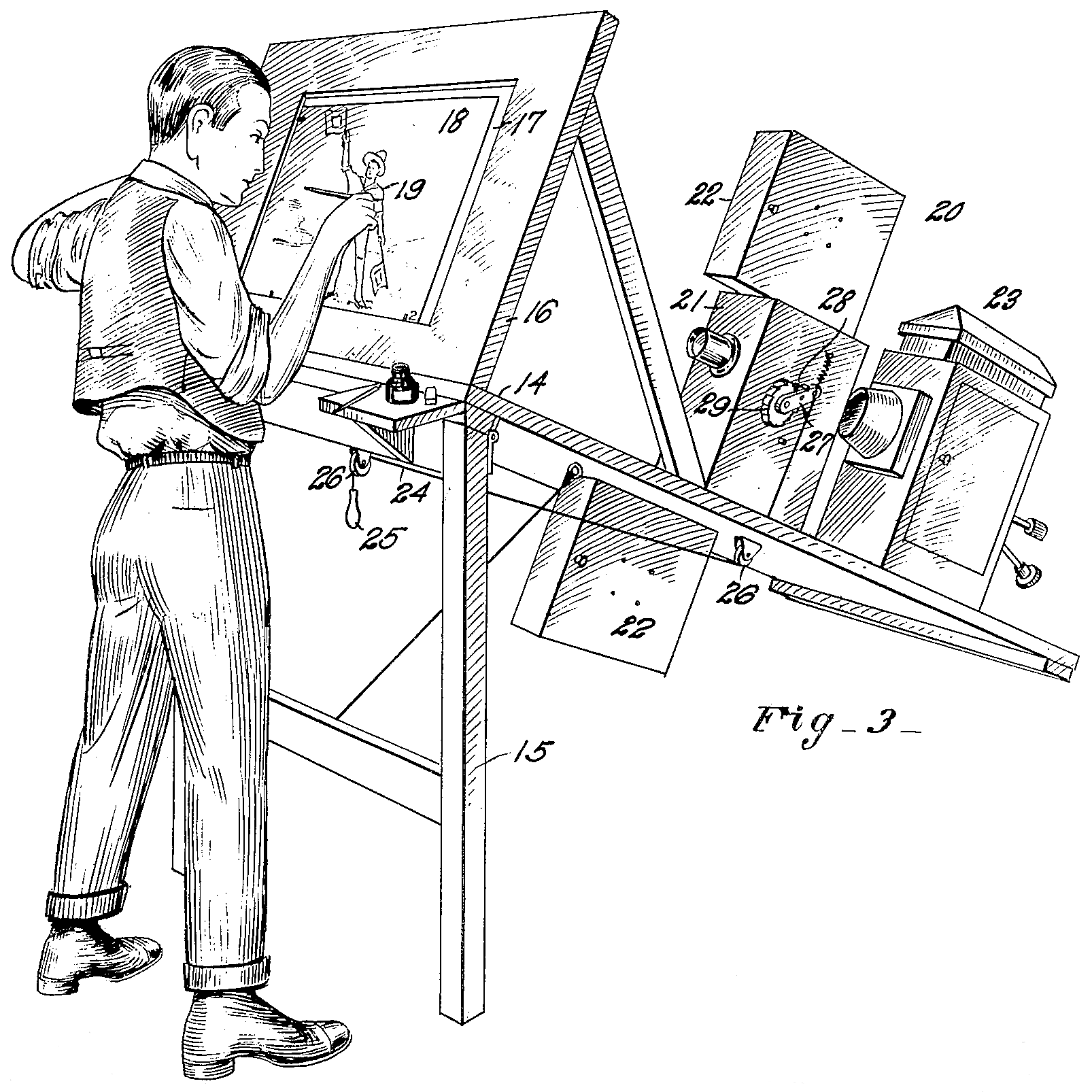Wikipedia
" Rotoscoping From Wikipedia, the free encyclopediaJump to: navigation, search
Patent drawing for Fleischer's original rotoscope. The artist is drawing on a transparent easel, onto which the movie projector at the right is throwing an image of a single film frame.Rotoscoping is an animation technique in which animators trace over live-action film movement, frame by frame, for use in animated films. Originally, recorded live-action film images were projected onto a frosted glass panel and re-drawn by an animator. This projection equipment is called a rotoscope, although this device has been replaced by computers in recent years. In the visual effects industry, the term rotoscoping refers to the technique of manually creating a matte for an element on a live-action plate so it may be composited over another background.
Another Rotoscope was invented by LeRoy Wottring for orthoptic training. See patent 2316139. The device was manufactured by the Wottring Instrument Company of Columbus, Ohio. In 1950, American Optical purchased the assets of Wottring Instruments and continued to build and market the product. Orthoptic training was used for a variety of eye conditions including amblyopia. "
Animatedtv
Rotoscoping
" 'Tom Goes to the Mayor'
Adult Swim
.Rotoscoping is used to capture realistic human movement by drawing over film footage of live actors. Perhaps this sounds like cheating, but adding an artist's vision to the movements of a human actor can create a unique storytelling medium that is just as stylistic as any other form of animation.
One of the most sophisticated examples of rotoscoping is the film Waking Life, starring Ethan Hawke and Julia Delpy. Waking Life took the 2001 Sundance Film Festival by storm, impressing audiences and critics with not only its animation style, but director Richard Linklater's ability to tell a moving, rich story using a frenetic animation style like rotoscoping.
.Rotoscoping is used to capture realistic human movement by drawing over film footage of live actors. Perhaps this sounds like cheating, but adding an artist's vision to the movements of a human actor can create a unique storytelling medium that is just as stylistic as any other form of animation.
One of the most sophisticated examples of rotoscoping is the film Waking Life, starring Ethan Hawke and Julia Delpy. Waking Life took the 2001 Sundance Film Festival by storm, impressing audiences and critics with not only its animation style, but director Richard Linklater's ability to tell a moving, rich story using a frenetic animation style like rotoscoping.
A much more simple example of rotoscoping is Tom Goes to the Mayor on Adult Swim. Actors are photographed performing the scenes. Then the photos are digitally processed using a graphics filter. When the rendered photos are strung together, the story is told using limited animation, no lip movements and little movement in arms and legs. "


